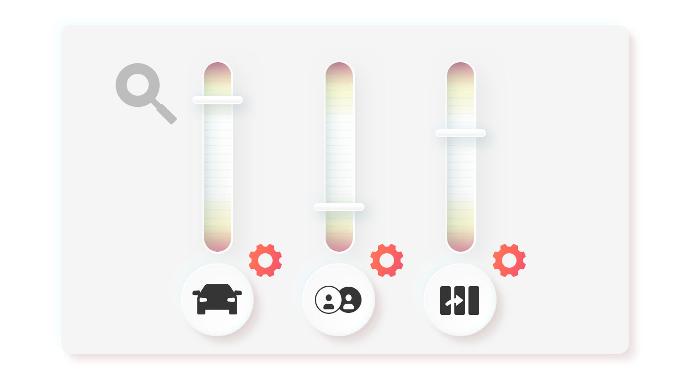It's easy to say that you want to optimize your own processes - but it's more difficult to get started. No matter how much you have studied the theory of Operational Excellence, Lean management and alike, you must eventually put what you have learned into practice. So that you don't stare into a blank sheet of paper forever and instead create a concrete roadmap that can be implemented, we present 5 possible first steps on your OPEX journey below.

Consolidated Knowledge for Take Away
This guide offers an easy introduction, extensive knowledge, best practices, tips & tricks. In 43 pages, you'll learn how to perform better with your team and add value to your offerings.

1. Block out a weekly date in your calendar to regularly focus on the analysis and design of your work processes.
In day-to-day business, tasks with a long-term perspective, such as process optimization, are easily put on the back burner. After all, fast results are not expected here, meaning the fruits of labor ripen at a later point in time.

2. Review whether there is a need for optimization in any of the three possible bottleneck areas of your sharing operation. Use the results to derive the goals of your OPEX strategy.
A useful step is to first get an overview of potential bottlenecks. The three most important bottleneck areas of a sharing operation are the following:

Insights into so-called "bottlenecks" and untapped potential help you define the goals of your process optimization.

3. Collect and analyze relevant key figures that provide information on the efficiency of your operational processes, such as average maintenance time, time spent on repositioning, etc.
Now analyze your status quo: How long are vehicles in maintenance mode? How much time is required to improve the parking position of a free-floating vehicle? On average, how long do customers wait for a response to an inquiry? Does your team work a lot of overtime hours?
Collect relevant key figures and find a suitable frequency (e.g. daily/weekly/monthly) in which you can monitor the key figures and see how they develop over time. Also define an optimum for each key figure, from which it should not deviate too frequently.

4. Have regular meetings with responsible employees to determine measures and tools for optimizing individual processes.
Even if you are ultimately responsible for optimizing your processes, you cannot identify all problems on your own and certainly cannot solve them all on your own.
For each process under consideration, seek out responsible employees and schedule regular meetings to discuss possible and necessary measures to be taken and evaluate the processes step by step.
Tip
Start with one (sub-)process first and not with several processes at the same time - especially if you are still at the beginning of process optimization. In this way, you can focus entirely on this process and apply potential learnings directly to the next process.

5. Use initial process optimization successes to promote Operational Excellence throughout the rest of the company and make the entire team aware of the opportunities and potential.
Operational Excellence is like a rowing boat in which everyone has to row at the same pace to reach the target. You need a mindset throughout the team that is geared toward problem solving and process optimization.
Successes that have already been achieved are a convincing argument. As soon as you have successfully optimized a process and can see the effects in the form of improved key figures or positive customer feedback, tell your colleagues about it!
Act as an OPEX representative, be proud of the improvements you have achieved, and don't stop telling the rest of the team about them. This way you demonstrate how worthwhile it is to carefully revise individual work processes and in turn increases the general motivation to follow OPEX.

Willpower and Consistency Are What Counts
Operational Excellence is not a given conclusion where much is certain. Nor is it more a marathon than a sprint. Nevertheless, excellence is not as unattainable and abstract as you may have feared. Take small steps, rely on current company data, seek exchange with your team, and keep your users at the center of focus. Then they will soon be (even) more satisfied than they are today.





